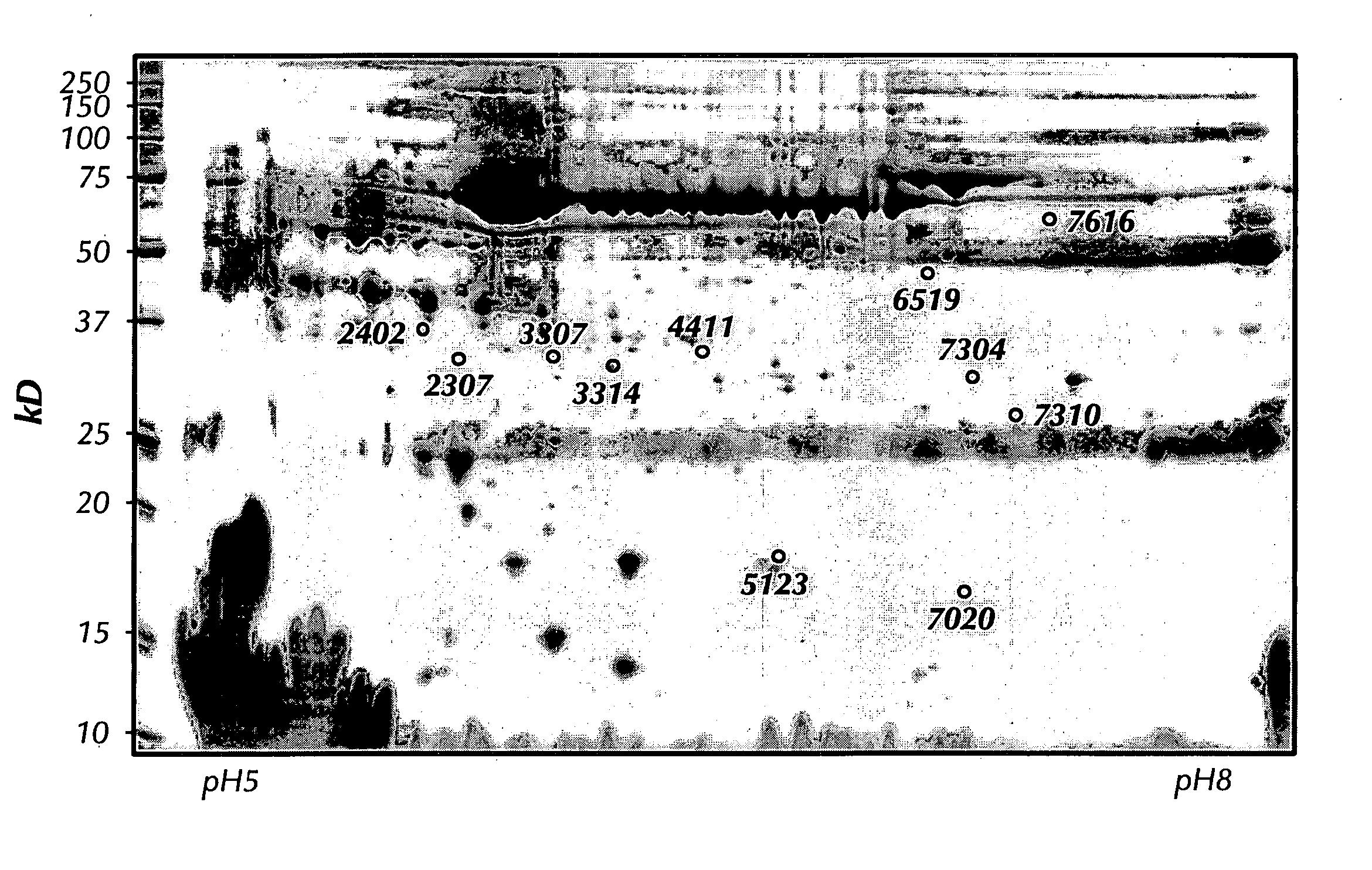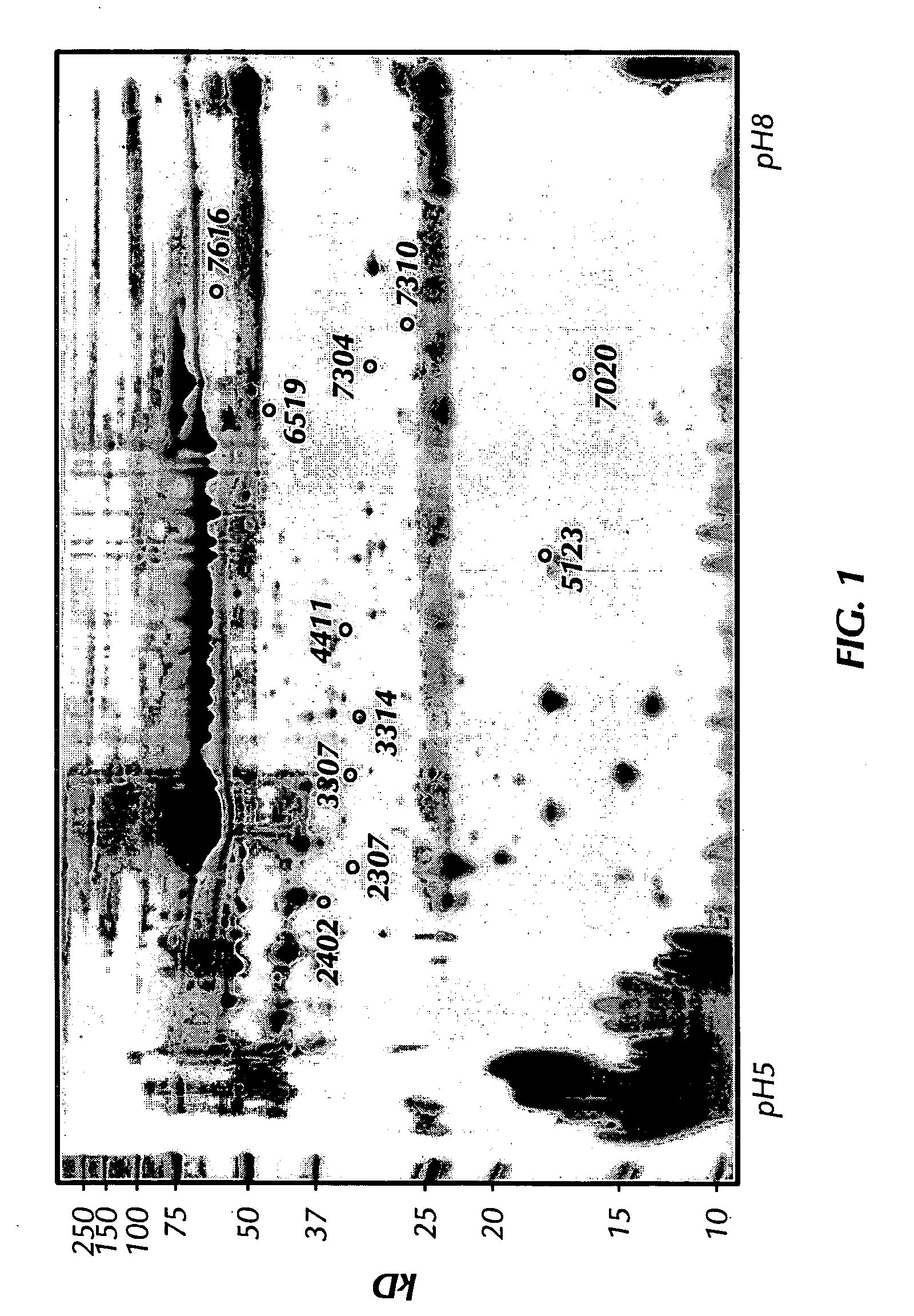FK506-binding protein 7 related protein as a biomarker for neurodegenerative disease
a neurodegenerative disease and related protein technology, applied in the field of identification of a neurodegenerative disease biomarker, can solve the problems of deteriorating the health of patients, revealing the risk or potential risk of individuals developing a disease, and infancy of proteomic testing for diagnostic purposes, and achieve the effect of reducing expression
- Summary
- Abstract
- Description
- Claims
- Application Information
AI Technical Summary
Benefits of technology
Problems solved by technology
Method used
Image
Examples
Embodiment Construction
[0019] The present invention relates to a biomarker for neurodegenerative disease, including amyotrophic lateral sclerosis (ALS), Alzheimer's (AD), and Parkinson's (PD) disease. More particularly, the present invention relates to the identification of a FK506-binding protein 7 (also known as prolylisomerase) or a closely related protein as a biomarker useful for the detection, diagnosis, and differentiation of neurodegenerative disease, including but not limited to ALS, AD, and PD.
[0020] The method for identification of the FK506-binding protein 7, or prolylisomerase, related protein as a biomarker for neurodegenerative disease is based on the comparison of 2D gel electrophoretic images of serum obtained from human subjects with and without diagnosed neurodegenerative disease.
[0021] 2D gel electrophoresis has been used in research laboratories for biomarker discovery since the 1970's (Goldknopf, I. L. et al. 1977. Proc. Natl. Acad. Sci. USA 74:864-868). In the past, this method ha...
PUM
| Property | Measurement | Unit |
|---|---|---|
| volume | aaaaa | aaaaa |
| volume | aaaaa | aaaaa |
| voltage | aaaaa | aaaaa |
Abstract
Description
Claims
Application Information
 Login to View More
Login to View More - R&D
- Intellectual Property
- Life Sciences
- Materials
- Tech Scout
- Unparalleled Data Quality
- Higher Quality Content
- 60% Fewer Hallucinations
Browse by: Latest US Patents, China's latest patents, Technical Efficacy Thesaurus, Application Domain, Technology Topic, Popular Technical Reports.
© 2025 PatSnap. All rights reserved.Legal|Privacy policy|Modern Slavery Act Transparency Statement|Sitemap|About US| Contact US: help@patsnap.com


